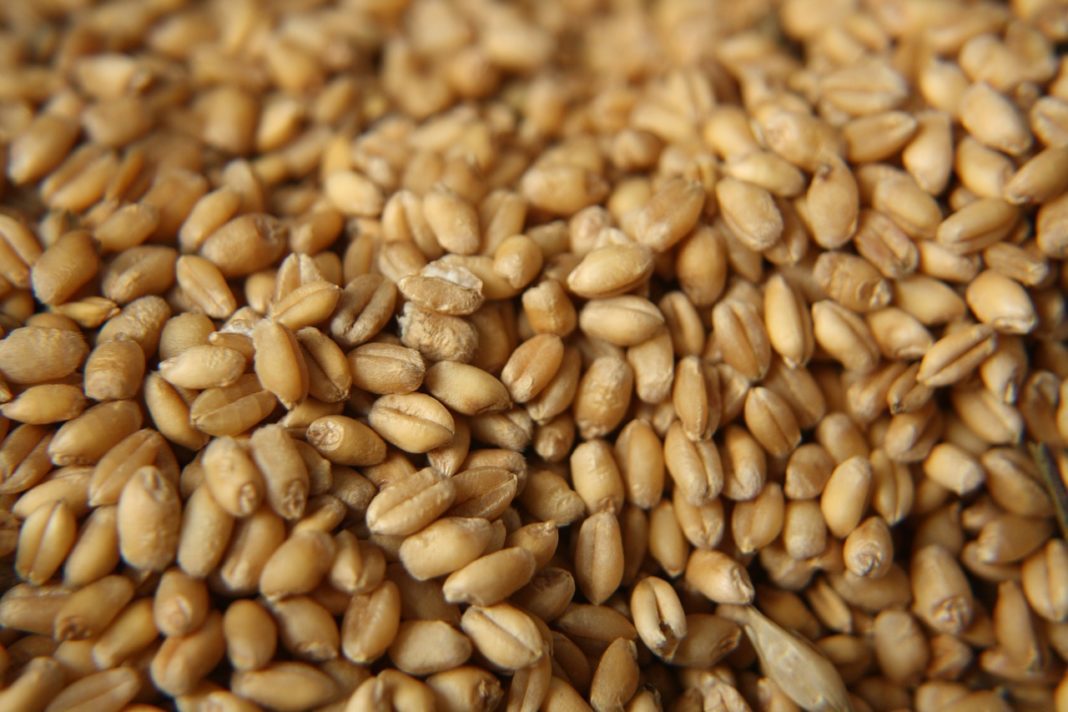The seed sector has come together to create a modern regulatory system designed to ensure innovative new varieties come to growers’ fields faster.
Imagine if we could ensure the best new crop varieties in Canada are available to farmers in a timely manner and innovative traits come to Canadian fields safely and more quickly, thereby maintaining farmers’ competitiveness in both domestic and global markets.
An effort to do just that is underway with Seed Regulatory Modernization (SRM), which is ongoing and expected to wrap up in 2025. SRM is an initiative to update Canada’s Seeds Regulations.
The main purpose of the Seeds Regulations is to protect producers and consumers from misrepresentation, prevent the use of low-quality seed and create a level playing field for companies and individuals involved in seed production.
“Seed health is vital to Canada as the first critical link in the agri-food value chain. The seed regulations ensure that quality standards remain high. The regulations provide assurance for quality, traceability, purity and movement,” says Wendy Jahn, national manager of the Canadian Food inspection Agency (CFIA) Seed Section.
“For instance, seed laws protect the farmer by legally requiring the seller to guarantee the quality of seed via standardized inspection and testing procedures. Those procedures, which may consist of a certification system and accreditation authorization procedures, protect enterprises that engage in quality seed production and protect consumers in the commercial sector and the farming community.”
Given that the total economic impact of pedigreed seed production is close to $6 billion per year, and the fact that it provides the foundation for our $30-billion per year grain industry, it becomes clear why seed regulation remains important to the Government of Canada and why the CFIA protects the industry’s best interest, she adds.
Canada’s seed laws are obviously important, but as technology changes, so does the global market for seed, and our seed regulations need an update. SRM doesn’t represent the first time the Seeds Regulations have been updated, but there hasn’t been a major overhaul made to them in 25 years.
The formal SRM process is being carried out via the SEED-RM Working Group, which falls under AAFC’s Value Chain Roundtables. Its purpose is to provide a collaborative approach where government and impacted seed/seed potato stakeholders collaborate in the co-development of proposed options to provide recommendations to the CFIA for amending the Seeds Regulations.
Working group members include:
- Producer groups
- Seed industry
- Seed potato industry
- Public breeders
- Commodity/value chain associations
- Other/special interest groups
Jahn hopes the final SRM recommendations will get into Canada Gazette Part I, which is the beginning of the official amendment process for the fall of 2024, taking the end of the process to 2025.
“We see [the winter of 2023] as an ideal opportunity to ask the broader stakeholders questions on some of the options and recommendations that have been put forward,” Jahn says.
Recommendations for Change
Although formal SRM discussions are ongoing, the public has been given plenty of insights into what is being talked about and what sort of proposals could be put forward for public input.
Doug Miller, executive director for the Canadian Seed Growers’ Association (CSGA), says Canada’s regulatory framework provides buyers with trust and confidence in what they’re buying, and trust is really key here.

Doug Miller, the executive director of the Canadian Seed Growers’ Association (CSGA). Photo: Ema Suvajac Photography
“At CSGA, our vision for the future is based on trust; that Canadian producers have trust and confidence in the seed they’re planting. We need a modern seed system that adapts quickly to change, creates a level playing field for all stakeholders, can deliver new technology, and is transparent and science based. Seed regulation isn’t just about quality; it’s about trust in that quality,” he says.
Issues CSGA has identified include inconsistencies and confusions in the system, ranging from incomplete datasets, record keeping issues, overly complex reporting requirements and systems, and even a lack of clear authorities for who is responsible for what within Canada’s seed regulatory system.
“When we look towards the future, it’s crucial we establish a clear designated authority. A strong national seed crop certification system, supported by a single window framework where CSGA is acting as the national designated authority on behalf of the Canadian government for all things related to seed certification, is the path forward,” Miller says.
Lauren Comin serves as regulatory affairs manager for Seeds Canada. The former director of research for Alberta Wheat and Alberta Barley knows the importance of variety development, and how a nimble, agile seed regulatory system is needed in order to move Canada into the future.
“Through SRM, the CFIA has signalled it is open to substantial change to our regulatory system, including government’s role in the regulation of seed. This opens the door for the seed industry to plan for the future and create a system designed to ensure stability but also be agile and able to turn on a dime when the need arises,” she says.
“The picture of where our system is today — and what the hurdles and barriers to that system are — must be painted clearly.”
Seeds Canada, alongside ag and seed sector partners, helped do that earlier this year with Seed Summit 2022, which laid out what industry and producers alike expect from a modern seed system. A few examples included:
- A predictable regulatory environment that attracts investment into Canada — an environment that makes good business sense for investors and allows them to gauge potential outcomes and timelines allowing for competition and choice in the marketplace
- A competitive, lower cost seed certification system, in order to remain competitive globally
- Timely access to varieties for producers and technologies so the ag and seed sectors don’t continue to fall behind global counterparts
- The opportunity for breeders to benefit from innovations in plant breeding, to gain access to useful traits, and to enable the industry to make use of the opportunities
According to Comin, anyone who is affected by the seed regulatory system knows that the success of Canadian producers depends on how well those who design our regulatory system understand the risks and threats that very system is facing and how to plan for those risks.
“Take the public variety development system for cereals, for example. That system, operated largely by Agriculture and Agri-Food Canada, has served farmers very well for many years,” Comin adds.
“But as the world changes and the business landscape changes along with it, we must be mindful of the threats that face the traditional public framework so we can respond quickly in the event that system changes for any reason — including government reallocation of priorities and resources.”
New Seed Varieties
As far as threats go, there are some high-profile ones, not least among them inflation. Canada’s inflation rate currently sits at 7.6 per cent, easing slightly from the 39-year high of 8.1 per cent it rose to last spring. That means the risk to producers of doing business is rising along with the cost of doing business, notes Rob Hannam, founder of Synthesis Agri-Food Network and CEO of Farm Health Guardian, a biosecurity software platform. He says farmer involvement is key in paving the path forward for Canada’s seed regulatory system.
“Farmers buy the seed; they plant the crop and take the risk. [Improving our seed regulatory system] shouldn’t be viewed as a seed company or a seed grower-led initiative; it should be a farmer-led initiative, and it absolutely should involve seed growers and seed companies and grain companies that buy the crops,” Hannam said.
“Farmers should all be demanding better varieties faster, and I’d like to see more farmer-driven leadership in seed, rather than just seed growers and seed companies recommending how to modernize the regulations.”
That new variety uptake would, of course, drive certified seed usage, but only if we can drive price efficiency at the same time, says Nick Sekulic, general manager of Prestville Farms in Alberta.
Currently, certified seed makes up a small proportion of total cereal seed planted in Canada. The 2018 report Canada’s Seed System: Economic Impact Assessment and Risk Analysis, conducted by the Canadian Seed Trade Association (which merged with three other seed industry associations to form Seeds Canada last year), says that only about 20 per cent of commercial spring wheat acres in Western Canada were planted with Certified seed from 2012-2014.
“We have to make sure that we’ve got the right value proposition on new genetics. Market-based factors will drive that. I’m not certain we have that right now in all aspects of our regulatory framework,” says Sekulic.
What is Seed Regulatory Modernization?
It concerns the modernization of the Seeds Regulations, within the Seeds Act of Canada. The Canadian Food Inspection Agency (CFIA) is looking to update these regulations in order to:
- Protect producers and consumers by strengthening existing requirements
- Improve responsiveness and consistency
- Reduce complexity
- Become adaptable and flexible to function in the modern, fast-changing world
What Seed Regulatory Modernization is not:
- It’s not a discussion about value creation. The CFIA, in cooperation with Agriculture and Agri-Food Canada, already conducted joint consultations with the grains sector on royalty collection models, enabled by Plant Breeders’ Rights, to stimulate greater investment and competitiveness in cereal breeding.
- It’s not about plant breeding innovation. The CFIA and Health Canada are actively working on projects to provide additional clarity on the regulatory approach to plant breeding innovations. Early discussions with industry stakeholders and other government departments have been held through a working group under the Biotechnology Working Group (BWG) of the Grains Round Table. Public engagement activities will be conducted prior to any new policy implementation.
Related Articles
Seed Regulatory Modernization: Are we Not Thinking Big Enough?
Here’s the Latest on what’s Happening with Seed Regulatory Modernization







